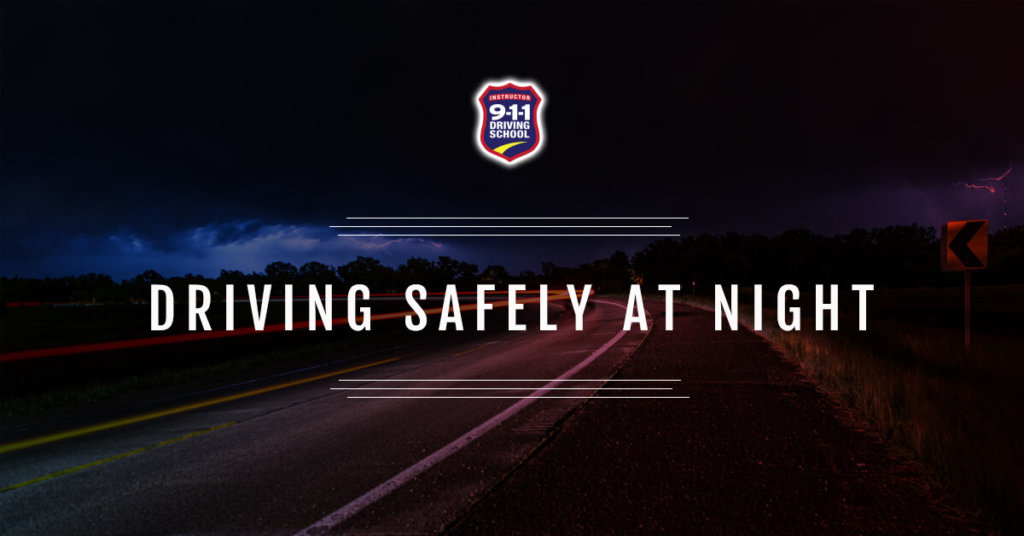Safe driving in the nighttime hours is an important skill for all drivers to acquire. For people who commute to work and school, there are a lot of hours in the dark driving from mid-fall to mid-spring. While dark driving conditions are more dangerous than during the daytime, it can be done with extra skills and training.
The Risks of Driving in the Dark
As mentioned before, the most dangerous part of driving in the dark is the reduced visibility of the road. From hazards on and around the road to seeing pedestrians better, everything is harder to see in the dark. Headlights cannot light up all your surroundings, especially in undeveloped areas where there are less cars and more animals. Human eyes have a harder time seeing too, giving a driver limited depth perception, less peripheral vision, and an inability to recognize colors.
Nighttime Driving Tips
Even though vision is limited in the dark, there are some basic adjustments to behaviors and the vehicle to make sure you are maximizing your site to stay safer.
- Increase the effectiveness of your headlights by keeping them clean
- Adjust the headlight beams so they are correctly pointed ahead at the road
- Keep dashboard lights dim enough that they do not interfere with your ability to see outside the car but not so dim that it is hard to see the buttons
- If you wear glasses, be sure to wear them while driving in the dark. To reduce the glare of oncoming headlights and dashboard lights, buy a pair for nighttime driving that are anti-reflective
- Keep your windshield clean and free from streaks
- Avoid looking directly into headlights of other cars
- Decrease your driving speed
Be sure to stay focused on the road and put away distractions like your phone. Other distractions may include eating messy foods or focusing too much on conversations with passengers in the car.
Avoiding Drowsy Driving
One obstacle of driving in the dark is fighting the instinct to feel sleepier in dark conditions. The brain is already pre-programmed to feel sleepier at night. The glare of oncoming headlights compound the problem because it causes the eyes to become more tired.
Staying awake and alert at the wheel is vital to staying safe. Driving while drowsy is as dangerous as driving under the influence of a substance. When a person is tired, their thinking and ability to react slow down and it is harder to focus, very similarly to driving while drunk.
If you notice yourself feeling drowsy, here are some ideas you can use to stay awake and alert:
- Get enough rest each night to ensure you are well rested
- If you find yourself falling asleep, pull off in a safe place and take a nap. Even 15 minutes can give you enough of a rest to finish your drive
- Avoid driving during your typical sleeping hours
The most common ways drivers stay awake is drinking caffeine, eating crunchy snacks, turning the music up loud and singing along, or having a conversation with a passenger. Each of these can keep a driver awake but be careful not to let any of these strategies distract your attention from the road.
Driving at night is an important skill to develop for all drivers, which is why most states require driver’s education courses to teach it. With practice and safe practices, drivers do not have to be intimidated by driving in the dark. Instead, just make some small adjustments to your behaviors and vehicle to stay safe.






